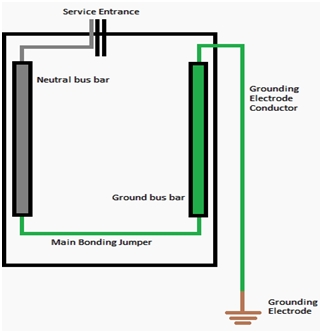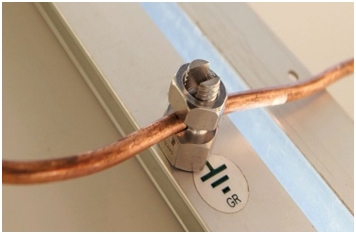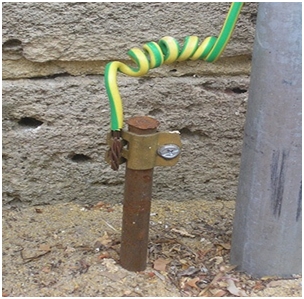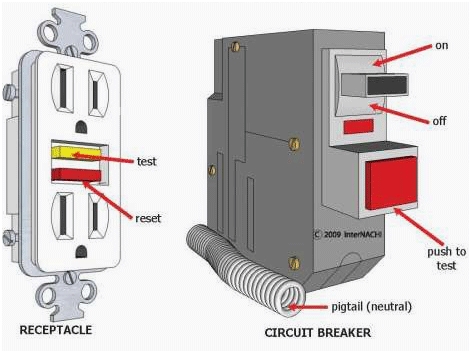Home › Electrical Engineering Forum › General Discussion › Top 10 most prominent grounding systems for industrial sectors
- This topic has 0 replies, 1 voice, and was last updated 9 years, 10 months ago by
admin.
-
AuthorPosts
-
2015/01/16 at 3:39 pm #11227
admin
KeymasterLast time we shared an article about the top 10 ways to increase energy efficiency and performance of pumping systems.
Now here’s another interseting top 10 of the most prominent grounding systems for industrial sectors…
…But before that, let us first understand what grounding/earth is.
Grounding
Grounding, also referred to as earth or zero potential, is a procedure which involves grounding a conductor into the earth (zero potential) from the mains supply, to allow surplus electricity to flow into it during sudden voltage spikes.
Types of power sources
Depending on the voltage transients, operating loads and type of load in operation, each electrical system may require different grounding techniques.
Types of Sources Grounding Technique Utility Service Depends on the configuration of the secondary wiring of the substation transformer Generator Depends on the configuration of the stator winding Transformer Depends on the configuration of the secondary winding Static Power Converter Depends on the configuration of the secondary winding Large scale electrical systems operating in industries fall into the above mentioned four categories.
Now, let us have a look at the most prominent grounding systems in place for industrial sector:
1. Grounded
This procedure involves normal grounding from the mains to the earth using effective conductor, in this case a normal copper wire would serve the purpose.
This type of grounding system works fine with electrical equipment working on normal loads and under general operating conditions, i.e., located in plain areas, i.e., not on hills where electrical equipment is susceptible to lightening strikes.
2.Effectively Grounded
This type of grounding system requires ground connections that have satisfactory low impedance levels. Suitable for loads operating on approximately 120V -240V.
Care should be taken to see that the current carrying capacity of an earth wire is sufficient to carry this type of load to prevent any electrical hazards.
3. Grounded Conductor
This procedure involves grounding a ground bus bar with the help of grounding electrode conductor as shown in the figure.
This earth type is suitable for both electrical systems and electrical circuits operating at medium loads.
4. Solidly Grounded
Here, the grounding procedure is same as above with only exception that there is no resistance inserted to the ground.
Also, impedance device is not present. This is because; the grounding connection in this type of grounding system is solid and deeply placed into the earth at a place where ground’s resistivity to conduct electricity is minimum.
5. Grounding Conductor
In this case both the electrical equipment and the grounding circuit are grounded using conductors.
This type of grounding is needed when there is high risk of varying potential differences in the operating electrical circuit.
6. Equipment Grounding Conductor
This type of grounding technique involves the usage of grounding electrodes that are connected to the non-current carrying terminals (metals) of the electrical system, raceways and other metallic parts of the equipment for efficient flow of voltage transients through electrodes for effective protection.
This technique is often implemented for grounding expensive electrical equipment and separately derived electrical systems.
7. Effective Ground Fault Current Path
In order to implement this kind of grounding system, one has to construct an electrically permanent conductive path that has low impedance levels that is capable of carrying current should a ground fault occur.
This path carries current from the point where ground fault occurred to the source of electrical supply, preventing any damages to the equipment and the personnel working on it.
8. Grounding Electrode Conductor
In this method, electrode conductors are connected to the grounding electrode of the equipment, and in turn are again connected to the grounding system of the entire electrical system. This is to ensure that if one grounding system fails, the other will substitute it.
Also, this will help high voltage differences in the circuit to traverse faster than a single electrode system. Generally, this technique is used to ground electrical systems operating on loads higher loads that are susceptible to a greater voltage spikes.
9. Ground Fault Protection of Equipment
This grounding system is intended to provide safety for electrical equipment from highly damaging “line to ground fault currents.”
This system operates by opening all the ungrounded conductors of the equipment in a circuit that is running the fault currents.
10. Ground Fault Circuit Interrupter
This is a special device intentionally constructed to ground electrical systems operating at critical loads. Its main purpose is to safeguard the staff working in the premises of the electrical system, from unwanted mishaps, such as electrical shocks.
Though this is an expensive way of grounding an electrical system, it is imperative that industries use this kind of grounding at critical electrical junctions where presence of personnel is required regularly.
Ground fault circuit interrupter de-energizes necessary circuits or, certain portions of it, for a pre-determined time period, as and when transient voltage passing into the ground through a grounded electrode exceeds a Class A device’s value for safe operation, thus keeping the people surrounding the system safe from electrical shocks.Conclusion
In conclusion, grounding electrical systems properly, taking the vulnerability of the equipment into consideration prevents any significant damages to the electrical equipment, or the people operating on it.
This procedure needs to be undertaken during the initial stages of an electrical system installation itself, if one wants to keep the damages done to people as well as the equipment, at a minimum.
What’s your opinion on that top 10? Do you have any other things to add?
-
AuthorPosts
- You must be logged in to reply to this topic.




